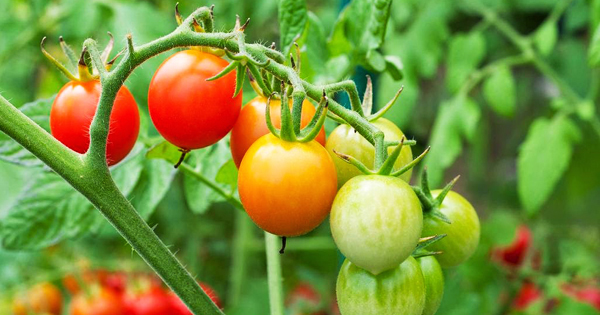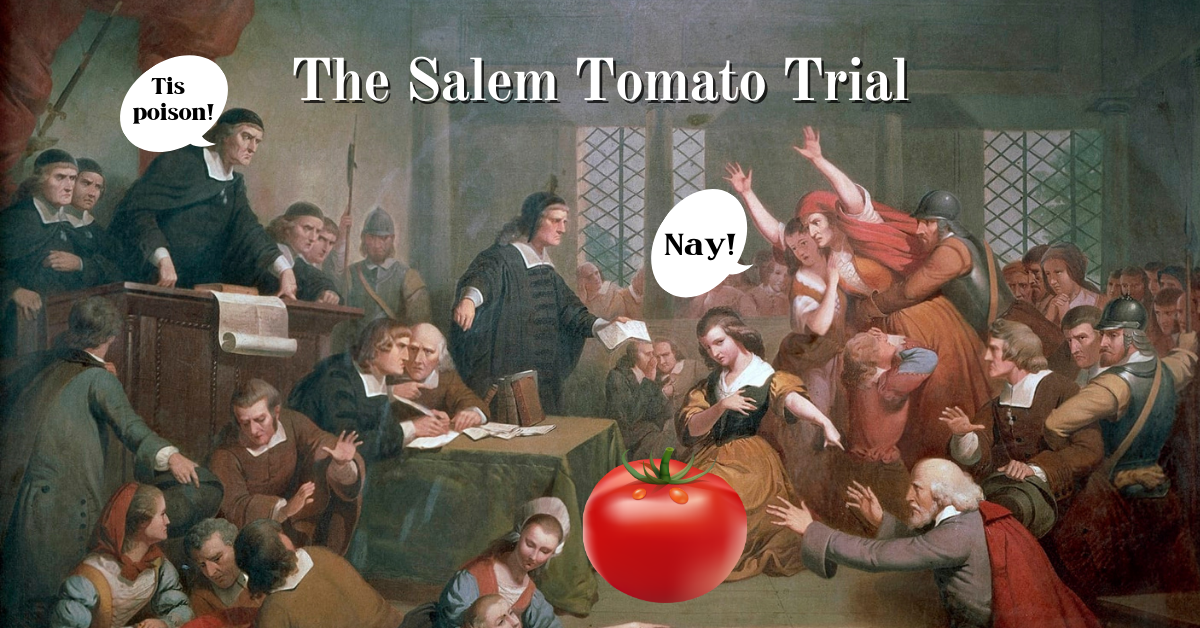While the tomato is a beloved part of nearly every cuisine worldwide, there was a time when most people viewed it with suspicion. That all changed after the infamous Salem Tomato Trial. But there’s also reason to view the legend of the trial with suspicion.
It is difficult to conceive of a world in which spaghetti, saucy pizza, or french fries doused in ketchup are absent from our eating habits. However, in days gone by, tomatoes had a very different image in the public eye. They were regarded as being highly dangerous.
However, one legend asserts that the popular opinion of tomatoes suddenly changed after the Salem Tomato Trial. By the way, that’s Salem, New Jersey.
Let’s take a look at the history of the tomato and its complicated relationship with Europe and North America before diving into the specifics of the Salem Tomato Trial.
The tomato’s wild ancestor likely originated in the western region of South America. The size of these wild variants was comparable to that of peas. The Aztecs and other people living in Mesoamerica are credited with being the first known people to domesticate the plant.
It’s unknown when the tomato plant was first domesticated, but by 500 BC, it was already being cultivated in southern Mexico and probably other areas of the surrounding region.
After capturing the Aztec city of Tenochtitlan (Teh-nosh-TEE-tlahn), which is modern-day Mexico City, in 1521, the Spanish conquistador Hernán Cortés may have been the first person to bring a small yellow tomato to Europe.

While among the indigenous peoples of Mesoamerica, the Conquistadors undoubtedly indulged in some mouthwatering proto-Mexican cuisine. However, when these soldiers of fortune made their way back to Spain laden with bushels of the alluring red fruit, most Europeans weren’t sure about eating it.
Following Spain’s colonization of the Americas, it was the Spanish who introduced the tomato to their colonies all across the Caribbean. They also brought it to the Philippines, which was the starting point for its spread to the rest of Southeast Asia and eventually the entire continent of Asia.
Tomatoes were first cultivated in Europe in the 1540s. They were most successful in climates that were similar to those found in the Mediterranean. It is possible that it was consumed not long after it was first introduced, and we know for a fact that it was consumed as food in Spain by the early 17th century.
Even though most Europeans eventually learned that tomatoes could be eaten, many continued to grow them only as ornamental plants. Many people were put off by the tomato’s botanical relationship to nightshade, which is a plant that is notorious for its high toxicity.
Before the 1590s, tomatoes were not cultivated in England at all. However, John Gerard, a barber and surgeon, is credited with being one of the first people to grow the plant in England. The writings of Gerard, which were first distributed to the public in 1597, contained the earliest discussions of the tomato to be found in England. Gerard was aware that the tomato was a food that was consumed in Spain and Italy. Despite this, he was under the impression that it was poisonous.
Gerard’s opinions had a significant impact. As a result, the tomato was stigmatized as a food unfit for consumption for a considerable amount of time in Britain and its North American colonies.
At the end of the 1700s, the tomato’s reputation suffered even more. Everything was subject to religious examination during this era because the level of religious zeal was at an all-time high – even the tomato wasn’t exempt. Moreover, because of its crimson appearance and close resemblance to other nightshade plants, people started associating the tomato with evil and death.

Why were aspects of the panic surrounding tomatoes particularly challenging to dispel? There have been documented instances of people falling ill or passing away after consuming the red fleshy fruit. But the tomato wasn’t to blame. Instead, it had everything to do with the dinnerware used at the time. It turns out that pewter was the actual offender, but the people of the time failed to recognize what was actually happening.
It may seem trivial, but the fact that Euro-Americans served their food, including tomatoes, on plates made of pewter is essential. The frighteningly high levels of lead found in pewter are made even more dangerous by the acidic nature of tomatoes. To put it another way, combining pewter and tomatoes was the ultimate example of a recipe for disaster.
The acid from the tomatoes would react with the pewter, which would cause lead to leach into anything else resting on the plate. This most likely contributed to the widespread belief that tomatoes were poisonous.
But one man, Colonel Robert Gibbon Johnson, would allegedly no longer put up with the tomato’s negative reputation. He was disgusted by the unfounded information, and as a result, he made the decision to stage the Salem Tomato Trial to prove once and for all that tomatoes are edible.
According to the legend, on September 25, 1820, Johnson brought a basket of tomatoes to the courthouse in Salem. Following the arrival of curious spectators, he proceeded to consume each and every one of the red fruits. Johnson remained conscious throughout the ordeal and showed no signs of illness or poisoning, much to the astonishment of those who watched him. The verdict of his tomato trial swayed the opinions of many. And thus, tomatoes came to be used frequently in New Jersey cuisine.
However, the trial’s details don’t stand up to historical scrutiny. The majority, if not the entirety, of this fantastic story, is fabricated. For example, even though Colonel Johnson did reside in Salem, New Jersey, the legend that he ate tomatoes at the courthouse does not appear in contemporary documents until approximately ninety years after it was said to have taken place.
In reality, you could find recipes for tomatoes in cookbooks published during that time period, and even Thomas Jefferson liked eating them. But on the other hand, the fruit may have been more popular among wealthy people, such as Jefferson, and as a result, it may have had a reputation that was less than appetizing in more rural regions.

So what blurred the line between fact and fiction regarding the legend of the Salem Tomato Trial?
The first mention of Johnson and his connection to tomatoes is found in a book about Salem County written in 1908 by a local newspaper editor named William Chew. Chew asserted unequivocally that Colonel Robert G. Johnson was the person who introduced tomatoes to Salem County in the year 1820. It was believed at that time that the food was unfit for widespread consumption. But Chew’s account did not come out until almost 90 years after the alleged event, and it never mentions the courthouse steps at any point.
The scene on the steps was first published in “The Delaware,” a book written in 1940 by Harry Emerson Wildes, who is now recognized all over the country as a history and sociology author. He stated in his book that Colonel Johnson established agricultural societies and country fairs to promote his passion for tomatoes. “Not, however, until 1820, when he dared to eat a prize tomato publicly on the courthouse steps, would cautious South Jersey accept as edible the vegetable that is now its largest crop,” noted Wildes.
From that point on, the legend began to develop.
And people like Joseph Sickler, a newspaper reporter and Salem’s postmaster, who CBS brought on as a “historical consultant” for a radio show that created an audio drama based on the story, helped grow the myth. The show presented it as fact and added fuel to the fire when it came to the accounts of the Salem Tomato Trial. These accounts were based on unwritten folklore, and people like Sickler compounded them.
Given the facts and details of what we know about the Salem Tomato Trial and the history of the tomato’s introduction to Europe and North America, the event didn’t happen. As interesting as the Salem Tomato Trial sounds, there’s not enough historical evidence to support it. So, the next time you’re slicing up some tomatoes for your next salad, be sure to remember the fruit’s complicated history over the last few centuries.


Be First to Comment